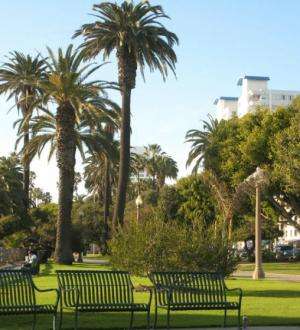Park perks: Teenagers who live close to a park are more physically active

(Medical Xpress)—California teenagers who live close to a park or open space are more likely to get exercise than those who live in areas without parks nearby, a new policy brief from the UCLA Center for Health Policy Research shows.
While the findings might not be surprising, they are important in park-starved areas of California. Across the state, only 25 percent of adolescents live near a park or open space. But those who do seem to benefit, according to the study, which linked 2009 California Health Interview Survey data to park locations provided by the Trust for Public Land.
Nearly 45 percent of California teens who live near a park—within a quarter-mile of a small park or a half-mile of a large one—reported that they bike, run, play sports or engage in other physical activities for at least one hour a day, at least five days a week. Only one-third of teens who don't have access to a nearby park reported the same level of physical activity.
"There are perks to having a park nearby," said Susan Babey, a senior research scientist at the UCLA center and lead author of the study. "And one of the biggest ones for teens seems to be physical activity. Having access to a welcoming green space makes it more likely that teenagers will get up and get moving."
The U.S. Department of Health and Human Services recommends at least 60 minutes of daily physical activity for teenagers. In California, only 15 percent of teens meet this recommendation, down from 19 percent in 2007.
While proximity to parks was associated with more physical exercise, the study also found that the perceived safety of neighborhood parks was a significant factor in park use. Low-income teenagers were more likely than teens from higher-income families to report that their neighborhood park was unsafe. Unsurprisingly, low-income teens were less likely to be active for at least one hour daily.
"Too many of our youth do not have access to the supports they need to achieve good health," said Dr. Robert K. Ross, CEO and president of The California Endowment, which funded the report. "Access to parks is a necessity, not a luxury. If we are to effectively address the childhood obesity epidemic in California, we must put resources where they are needed. All families, regardless of income, need access to safe parks where children and youth can engage in physical activity."
Among the report's findings:
- Less physical activity among low-income teens. Only 34.5 percent of low-income teens were physically active for at least an hour a day on five or more days a week, compared with 40 percent of higher-income teens, whether or not they lived near a park.
- More low-income teens perceive parks as unsafe. The percentage of low-income teens reporting that their neighborhood park was unsafe was more than double the percentage for higher-income teens (16.1 percent vs. 5.8 percent.)
- Perception of park safety influences park visits. Eighty percent of teens who strongly agreed that their neighborhood park was safe reported a recent park visit, compared with just 66 percent of those who thought their nearby park was not safe.
Read the policy brief: "Physical Activity, Park Access and Park Use among California Adolescents."
















